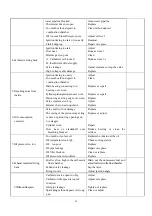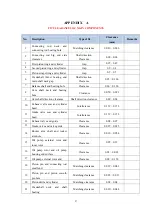
16
3.6 CARBURETOR ASSEMBLY
In order to achieve good power performance and economy with low exhaust gas pollution.
Engine is equipped with a meticulously designed and adjusted carburetor. It has a sliding valve
which serves to prevent mixture to be too rich during decelerating and reduce CO and HC content
in exhaust gas. The air equilibrating chamber which is connected to float chamber serves to avoid
fuel vapor overflow and to avoid negative effects caused by clogged air filter .In addition the
P32Q-1 carburetor also has a start /high speed/idling speed mechanism, which serves to have a
good cooperation between choke value and throttle value under starting and idling speed operating
conditions to make engine run at higher idling speed to reduce warming up time.
3.7 LUBRICATION SYSTEM
Oil pump is installed in oil pan under timing chain cover. The screw fitting oil filter and main
oil gallery are distributed in timing chain cover. The chain is lubricated by spraying of oil from
nozzle. Forced and splash lubrication system is used for engine. Oil filter is convenient in use
and easy in replacement with a one-assembly structure.
Oil pressure is indicated by an oil pressure switch. When oil pressure is under specified value,
the indicator is on.
3.8 COOLING SYSTEM
Engine is cooled by pressurized circulating water. A centrifugal water pump and a nylon fan
with blades of different lengths are adopted. Results of food radiation, small power loss and small
noise for fan are achieved.
The opening temperature of the paraffin thermostat is at 75°C.
3.9 ELECTRICAL SYSTEM
A. Alternator: silicon rectified high speed alternator. its negative terminal is connected to the
Earth.
B. Starting motor: electromagnetic drive unidirectional clutch.
C. Distributor: contact type, with rechargeable indicator.
D. Regulator: contact type, with rechargeable indicator.
The electrical diagram of engine is shown in fig.3-13 Alternator is driven by crankshaft pulley
through fan belt. It is necessary to adjust tensioning of fan belt in accordance with specification
(refer to chapter 4. cooling system maintenance).














































